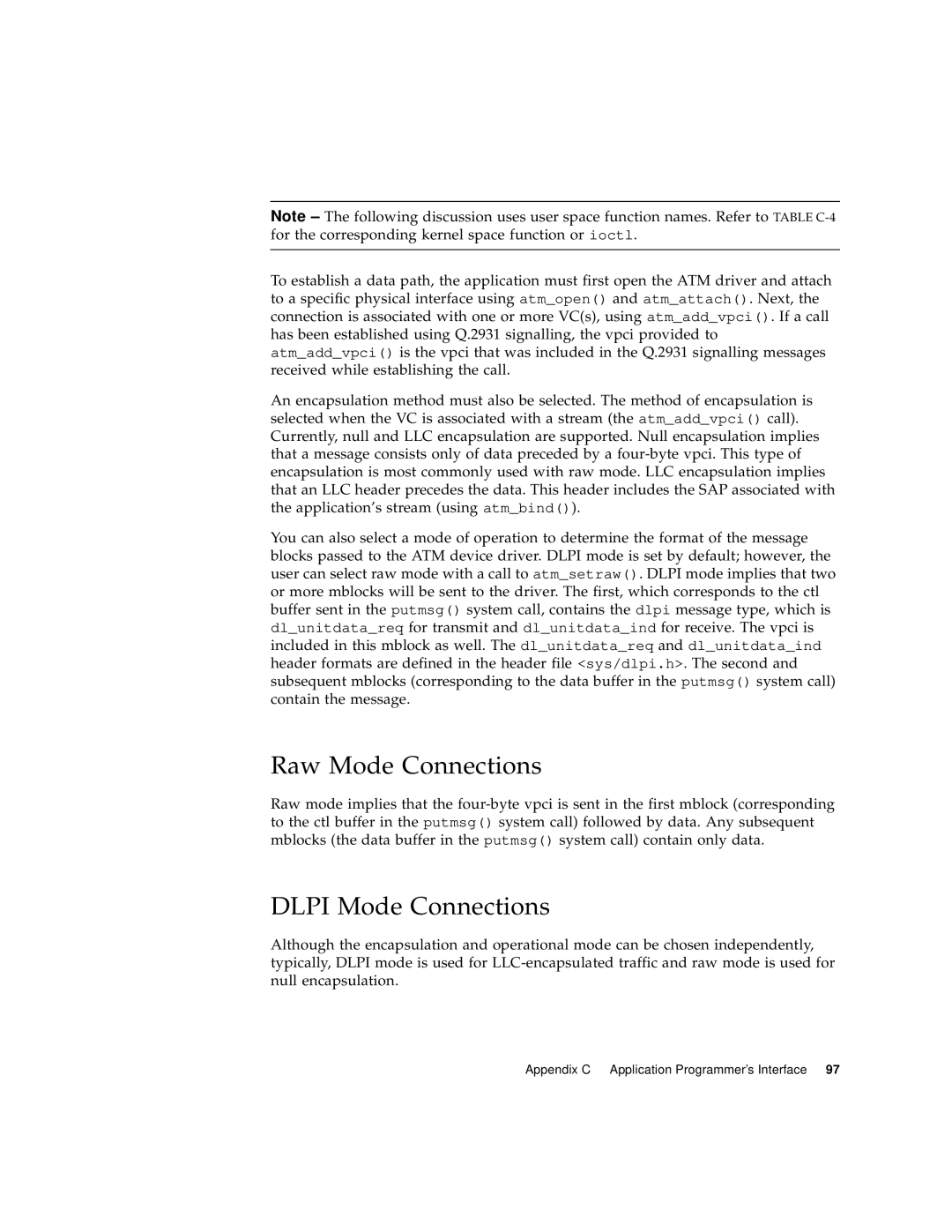Note
To establish a data path, the application must first open the ATM driver and attach to a specific physical interface using atm_open() and atm_attach(). Next, the connection is associated with one or more VC(s), using atm_add_vpci(). If a call has been established using Q.2931 signalling, the vpci provided to atm_add_vpci() is the vpci that was included in the Q.2931 signalling messages received while establishing the call.
An encapsulation method must also be selected. The method of encapsulation is selected when the VC is associated with a stream (the atm_add_vpci() call). Currently, null and LLC encapsulation are supported. Null encapsulation implies that a message consists only of data preceded by a
You can also select a mode of operation to determine the format of the message blocks passed to the ATM device driver. DLPI mode is set by default; however, the user can select raw mode with a call to atm_setraw(). DLPI mode implies that two or more mblocks will be sent to the driver. The first, which corresponds to the ctl buffer sent in the putmsg() system call, contains the dlpi message type, which is dl_unitdata_req for transmit and dl_unitdata_ind for receive. The vpci is included in this mblock as well. The dl_unitdata_req and dl_unitdata_ind header formats are defined in the header file <sys/dlpi.h>. The second and subsequent mblocks (corresponding to the data buffer in the putmsg() system call) contain the message.
Raw Mode Connections
Raw mode implies that the
DLPI Mode Connections
Although the encapsulation and operational mode can be chosen independently, typically, DLPI mode is used for
Appendix C Application Programmer’s Interface 97
